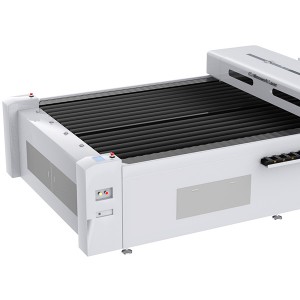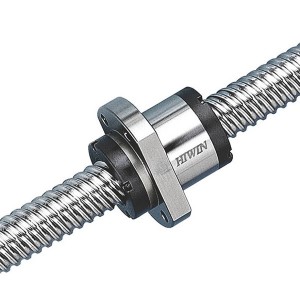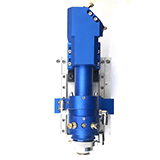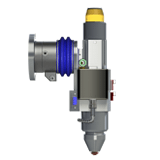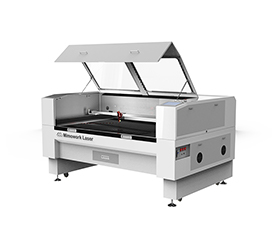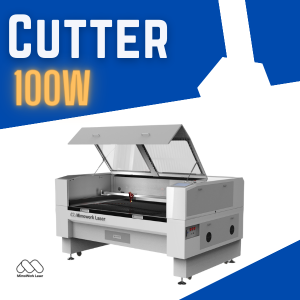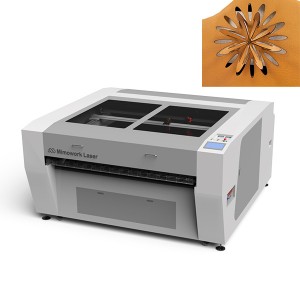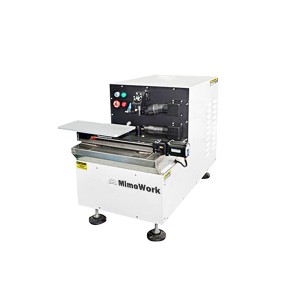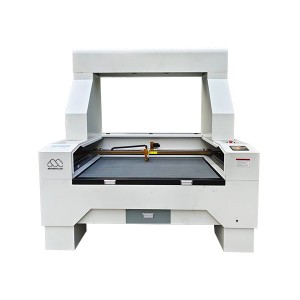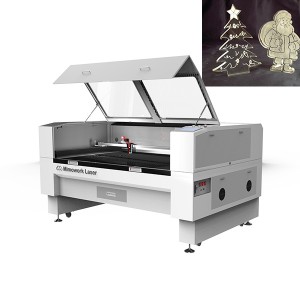Industrial Wood Laser Cutter for Large & Thick Wood(Up to 30mm)
▶ Large format laser cutter for wood
Technical Data
|
Working Area (W * L) |
1300mm * 2500mm (51” * 98.4”) |
|
Software |
Offline Software |
|
Laser Power |
150W/300W/450W |
|
Laser Source |
CO2 Glass Laser Tube |
|
Mechanical Control System |
Ball Screw & Servo Motor Drive |
|
Working Table |
Knife Blade or Honeycomb Working Table |
|
Max Speed |
1~600mm/s |
|
Acceleration Speed |
1000~3000mm/s2 |
|
Position Accuracy |
≤±0.05mm |
|
Machine Size |
3800 * 1960 * 1210mm |
|
Operating Voltage |
AC110-220V±10%,50-60HZ |
|
Cooling Mode |
Water Cooling and Protection System |
|
Working Environment |
Temperature:0—45℃ Humidity:5%—95% |
|
Package Size |
3850mm * 2050mm *1270mm |
|
Weight |
1000kg |
▷ Features of 1325 Laser Cutter
A Giant Leap in Productivity
◾ Stable & Excellent Cutting Quality

Constant Optical Path Design
With the optimal output optical path length, the consistent laser beam at any point in the range of the cutting table can result in an even cut through the entire material, regardless of thickness. Thanks to that, you can get a better cutting effect for acrylic or wood than the half-flying laser path.
◾ High Efficiency and Precision

Efficient Transmission System
X-axis precision screw module, Y-axis unilateral ball screw provide excellent stability and precision for the high-speed movement of the gantry. Combined with servo motor, the transmission system creates fairly high production efficiency.
◾ Durable and Long Service Life
Stable Mechanical Structure
The machine body is welded with a 100mm square tube and undergoes vibration aging and natural aging treatment. Gantry and cutting head use integrated aluminum. The overall configuration ensures a stable working state.

◾ High Speed Processing

High Speed of Cutting and Engraving
Our 1300*2500mm laser cutter can achieve 1-60,000mm /min engraving speed and 1-36,000mm/min cutting speed.
At the same time, position accuracy is also guaranteed within 0.05mm, so that it can cut and engrave 1x1mm numbers or letters, totally no problem.
Why choose MimoWork Laser
130250 laser machine details comparison
|
|
Other manufacturer’s |
MimoWork laser machine |
|
Cutting speed |
1-15,000mm/min |
1-36,000mm/min |
|
Position accuracy |
≤±0.2mm |
≤±0.05mm |
|
Laser power |
80W/100W/130W/150W |
100W/130W/150W/300W/500W |
|
Laser path |
Half-fly laser path |
Constant optical path |
|
Transmission system |
Transmission belt |
Servo motor + ball screw |
|
Driving system |
Step driver |
Servo motor |
|
Control system |
Old system, out of the sale |
New popular RDC control system |
|
Optional electrical design |
No |
CE/UL/CSA |
|
Main body |
Traditional welding fuselage |
Reinforced bed, the overall structure is welded with 100mm square tube, and undergoes vibration aging and natural aging treatment. |
Samples From Wood Laser Cutter
Suitable wood materials
MDF, Basswood, White Pine, Alder, Cherry, Oak, Baltic Birch Plywood, Balsa, Cork, Cedar, Balsa, Solid Wood, Plywood, Timber, Teak, Veneers, Walnut, Hardwood, Laminated Wood and Multiplex
Wide applications

Videos | What can the laser cutter do for you?
Laser Engraving Photo on Wood
Get A Wood Laser Cutter to Improve Your Business
Enjoy the laser wood fun!
▶ Large format laser cutter for wood
Upgrade Options for you to choose
Mixed Laser Head
Auto Focus
The CCD Camera can recognize and position the pattern on the printed acrylic, assisting laser cutter to realize accurate cutting with high quality. Any customized graphic design printed can be flexibly processed along the outline with the optical system, playing an important part in advertising and other industry.
Related Questions: You Might Be Interested In
1. Can I use any type of wood for laser cutting, or are there specific wood types that work best?
2. What thickness of wood can a CO2 laser cutting machine handle effectively?
Yes, safety is paramount when working with lasers. Ensure proper ventilation in your workspace to remove fumes generated during the cutting process. Always wear appropriate personal protective equipment (PPE), including safety glasses. Additionally, make sure the wood is free from any coatings, finishes, or chemicals that might produce harmful fumes when exposed to the laser.
Wood Cutting: CNC Routers VS Laser
1. Advantages of CNC Routers
Historically, one of the primary benefits of opting for a router as opposed to a laser was its ability to achieve precise cutting depths. A CNC router offers the convenience of vertical adjustments (along the Z-axis), allowing for straightforward control over the depth of the cut. In simpler terms, you can adjust the cutter's height to selectively remove only a portion of the wood's surface.
2. Disadvantages of CNC Routers
Routers excel in handling gradual curves but have limitations when it comes to sharp angles. The precision they offer is constrained by the radius of the cutting bit. In simple terms, the width of the cut corresponds to the size of the bit itself. The smallest router bits typically have a radius of approximately 1 mm.
Since routers cut through friction, it's crucial to securely anchor the material to the cutting surface. Without proper fixation, the router's torque can result in the material spinning or shifting abruptly. Typically, wood is fastened in place using clamps. However, when a high-speed router bit is applied to tightly-clamped material, significant tension is generated. This tension has the potential to warp or harm the wood, presenting challenges when cutting very thin or delicate materials.

3. Advantages & Disadvantages of Laser

Similar to automated routers, laser cutters are controlled by a CNC (Computer Numerical Control) system. However, the fundamental distinction lies in their method of cutting. Laser cutters do not rely on friction; instead, they cut through materials using intense heat. A high-energy light beam effectively burns through wood, as opposed to the traditional carving or machining process.
As previously noted, the width of a cut is determined by the size of the cutting tool. While the smallest router bits have a radius of slightly less than 1 mm, a laser beam can be adjusted to have a radius as small as 0.1 mm. This capability allows for the creation of extremely intricate cuts with remarkable precision.
Because laser cutters utilize a burning process to cut through wood, they yield exceptionally sharp and crisp edges. Although this burning can lead to some discoloration, measures can be implemented to prevent undesired burn marks. Additionally, the burning action seals the edges, thereby minimizing the expansion and contraction of the cut wood.
Related Laser Machine
for wood and acrylic laser cutting
• Fast & precise engraving for solid materials
• Two-way penetration design allows ultra-long materials placed and cut
for wood and acrylic laser engraving
• Light and compact design
• Easy to operate for beginners




